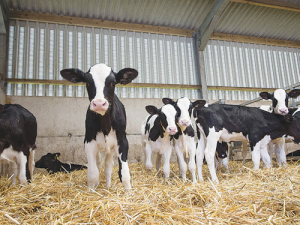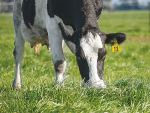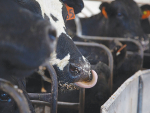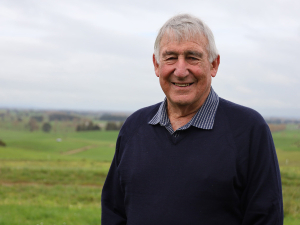The busyness of calving time, with cows calving, mastitis, down cows and sometimes managing new workers, can make it easy to overlook those tiny critters that aren’t yet producing you any money.
But the best genetics in your herd are sitting right there, so try to raise them to their full potential. What is the use of all those early mornings in October staring at rub marks if you weren’t going to get some genetic gain.
For our calves to reach their potential we need to keep them hitting their daily growth rates, and have them well grown in height and weight before the planned start of mating.
A heifer needs to reach puberty to ensure she is cycling before we can even think of mating her, and puberty is reached at about 50% of mature adult live weight.
The following will cause calves born this season to fail to reach their growth targets before their planned start of mating in 14 months:
1. Calf was born late in the season: a calf born on day one of calving and one born in week 6 both have the bull put out on the same day.
2. Disease
3. Failure of passive transfer (FPT): in this condition calves don’t get enough colostrum
4. Parasitism
5. Nutrition
Today, we will look focus on the first two management aspects that impact their future growth. Next issue, we will delve deeper into preventing these issues looking into colostrum management, nutrition and parasitism.
Calves born late in the season
Tackling this one involves working closely with your veterinarian to improve your 6-week in-calf rate and conception rate. We want to maximise the heifer replacements born early in the season so that they can all have the same chance when the bull goes out. Those born later will need to have higher daily weight gains to ensure they catch up to the rest.
Disease
When a calf is suffering from disease, whether it is scours, pneumonia or even a navel infection, its energy is used for fighting this, not for growth. Most of the disease that we see is within the first 4 weeks of life, and we will discuss why this is in the next article. Prevention of disease is a balancing act between the calves having a healthy immune system (discussed in next article), and ensuring the environment is favourable to reduce stress and have a low contamination of the pathogens that can cause them sickness.
The principles to achieve this are:
1. Do not overcrowd your pens
a. Calves require a minimum of 1.5m2 per calf for first two weeks and 2.5-3m2 after
2. Good drainage
3. Adequate ventilation
4. Ensure all calves have water
5. Solid partitions between pens to decrease disease spread
6. If calves are going outside early ensure they have shelter available (adverse weather conditions cause them stress)
7. Ensure all feeders and utensils are disinfected daily
8. Keep a clean calf trailer
9. Spray calf navels with a spirit-based iodine solution (products above 7% will dry out navels faster)
a. Preferably spray them before they enter the calf trailer as this can be a contaminated environment
10. Monitor your calves for early signs of disease and if you suspect it, clean yourself and your gear before changing pens.
The calf rearing process can be time concerning but rewarding when you get it right. Remember that one day the oldest cow in your herd will be the calf born this season, so it is never too late to make a difference.
The calf rearing process can be time concerning but rewarding when you get it right. Remember that one day the oldest cow in your herd will be the calf born this season, so it is never too late to make a difference.
This article was brought to you by Virbac - Shaping the future of animal health.


















